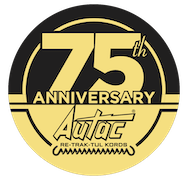Coiled Phone Cord, often referred to as curly cords, are one of the most recognizable and enduring components of traditional telephony hardware. They have been a staple of landline telephones for decades, providing flexibility and functionality in a compact form. Though their prominence has declined with the rise of mobile phones and wireless communication, coiled cords remain a symbol of classic communication systems and still find use in many homes and workplaces today. This note delves into the design, function, history, advantages, disadvantages, and modern usage of coiled phone cords.
1. Introduction To Coiled Phone Cords
A coiled phone cord is a spirally wound cable that connects the telephone handset to the main phone base. These cords are generally made of copper wire encased in a flexible plastic insulation and are shaped into tight spirals. This coiled structure gives them the ability to stretch and retract, allowing users to move the handset within a certain range without excessive slack or tangling.
2. History And Evolution
Coiled cords became popular in the mid-20th century, particularly during the 1950s and 1960s, when the design of household and office phones became more user-centric. Early phones had rigid cords, which limited movement and convenience. As telecommunications technology advanced, the coiled design was introduced to solve the issue of cable slack and tangling.
The introduction of the coiled phone cord allowed users more freedom to move around while talking on the phone. By the 1970s, nearly all home and office landline phones used coiled cords for the handset connection. These cords became standard on models such as the Western Electric Model 500 and many business desk phones.
3. Design And Materials
Coiled phone cords are designed with both form and function in mind. Key components include:
- Copper Conductors: Usually two or four strands of copper wire inside, depending on the phone’s design and function.
- Insulation and Jacket: The inner wires are insulated and then surrounded by a flexible plastic jacket (typically PVC or polyurethane).
- Coiling Process: The straight cord is heated and wound around a mandrel or coil former to achieve the springy spiral shape. When cooled, the shape is retained.
The ends of the cord typically have modular RJ9 connectors (sometimes RJ10 or RJ22) that plug into the handset and phone base. These connectors are smaller than standard RJ11 connectors used for wall jacks.
4. Functionality And Advantages
The primary purpose of coiled cords is to provide a stretchable connection between the phone handset and base. Their design offers several practical advantages:
4.1 Flexibility and Mobility
The stretchable nature allows the user to move several feet away from the base unit without needing a long, trailing cable. It’s especially useful in office environments where multitasking at a desk is common.
4.2 Space Efficiency
Because the cord retracts when not in use, it avoids clutter and keeps desks and countertops organized.
4.3 Reduced Tangling (To an Extent)
While not immune to tangling, coiled cords generally handle movement better than straight cords. They tend to return to their original shape, minimizing permanent kinks and knots.
4.4 Durability
Coiled cords are built to handle stretching and retracting repeatedly. Good quality cords last for years with minimal degradation if used properly.
5. Common Issues And Solutions
Despite their benefits, coiled phone cords are not without problems. Some common issues include:
5.1 Tangling and Twisting
Over time, frequent twisting during use can cause the cord to become tangled or deformed. This can lead to reduced elasticity, poor appearance, and even strain on internal wires.
Solution: Periodic unwinding or using a cord detangler (a small device that attaches between the handset and cord) can reduce twisting.
5.2 Electrical Wear
Wires inside can fray or break over time due to continuous stretching. This can lead to poor sound quality or intermittent connections.
Solution: Replace the cord when signs of damage or crackling audio appear.
5.3 Stiffening Over Time
The plastic insulation may harden, especially in dry or sunlit environments. This reduces the elasticity of the coil.
Solution: Store and use the phone away from direct heat or sunlight, or replace the cord with a high-flex alternative.
6. Variations And Customization
Coiled phone cords come in different lengths, colors, and connector types. While black and beige are standard for traditional models, newer cords are available in colors such as red, white, blue, and gray to match modern interior decor.
Length typically ranges from 6 to 25 feet (extended length), with retracted lengths much shorter—making them ideal for adjustable setups. Some specialty versions are made with anti-tangle materials or extra-soft jackets for greater comfort.
7. Applications In The Modern Era
While smartphones and wireless phones dominate today’s communication landscape, coiled phone cords still have specific applications:
7.1 Business Offices
Many office environments still use corded desk phones, particularly with VoIP systems or in call centers. Corded phones are considered more reliable and secure for certain types of communication.
7.2 Healthcare and Industrial Settings
Corded phones with coiled cords are commonly used in hospitals, clinics, and industrial sites where reliability, cleanliness, and hands-free operation via shoulder cradle use are important.
7.3 Emergency Phones
Corded phones (and their coiled cords) are still used in emergency systems, elevators, and backup communication systems because they do not rely on batteries or wireless signals.
8. Symbolism And Cultural Relevance
Beyond functionality, the coiled phone cord has become a visual icon of vintage technology. It often appears in retro-themed art, television shows, and photography to evoke nostalgia. For many, the sensation of the curly cord between fingers or the habit of stretching it while talking remains a memorable part of personal history.
9. Transition To Wireless Alternatives
The widespread adoption of cordless phones in the 1990s and smartphones in the 2000s led to a steady decline in coiled cord usage. Bluetooth headsets, speakerphones, and touchscreens now provide functionality once reliant on cords. However, corded systems still offer clarity, reliability, and no battery concerns, keeping them relevant in specific use cases.
10. Conclusion
Coiled phone cords may seem like a relic from the past, but they continue to serve important roles in modern environments. Their design, which maximizes flexibility and minimizes clutter, represents a simple yet effective engineering solution to the problem of telephone mobility. As technology continues to evolve, the humble coiled cord stands as a testament to practical design and enduring utility.
While wireless solutions dominate the consumer landscape, coiled cords remind us of a time when form and function met with elegant simplicity—proving that sometimes, even the smallest components can leave the most lasting impressions.




Recent Comments